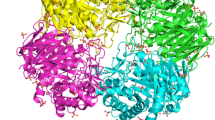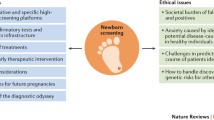Abstract
Enzyme activity can be deficient in the lysosome because certain newly synthesised mutation-bearing proteins are unstable and prone to misfolding. These structurally defective proteins are detected by the quality control system in the endoplasmic reticulum and subsequently diverted to cellular pathways of degradation. Recent studies have shown that low molecular weight ligands that are competitive inhibitors for some of these lysosomal enzymes can, in subinhibitory concentrations, act as ‘chaperones’ and rescue the mutant proteins, leading to the reconstitution of their hydrolytic activity within the lysosome. The potential of these agents as a therapeutic option will be dependent on their safety and tolerability profile, and the absence of toxic metabolic byproducts resulting from their use; there should be no or minimal nonspecific interference with other physiological or adaptive cellular activities. Compared with enzyme replacement therapy, the plausible advantages of using small molecule chaperones derive from the ease of oral administration, lack of immunogenicity and the possibility of delivery across the blood-brain barrier; and thus the potential to treat neurodegenerative clinical variants. The major challenges in developing therapies for rare diseases, such as the lysosomal storage disorders (LSDs), include recruitment of a sufficient number of suitable study patients and establishment of the optimal (dose/frequency) regimen to achieve a meaningful outcome. Multiple therapeutic approaches for the LSDs will provide patients with a range of options, which may be adequate as singular strategies or when given in combination. This review examines the characteristics of select agents that represent current candidates for a chaperone-mediated approach to the treatment of a subgroup of the LSDs, specifically the glycosphingolipidoses. Clinical trial experience with the use of these drugs will clarify their position in the management algorithm, which currently has enzyme replacement therapy as its linchpin. A major therapeutic goal would be improved physical and functional wellbeing, leading to increased meaningful survival.




Similar content being viewed by others
References
Weibel TD, Brady RO. Systematic approach to the diagnosis of lysosomal storage disorders. Ment Retard Dev Disabil Res Rev 2001; 7 (3): 190–9
Meikle PJ, Fietz MJ, Hopwood JJ. Diagnosis of lysosomal storage disorders: current techniques and future directions. Expert Rev Mol Diagn 2004 Sep; 4 (5): 677–91
Martin PL, Carter SL, Kernan NA, et al. Results of the cord blood transplantation study (COBLT): outcomes of unrelated donor umbilical cord blood transplantation in pediatric patients with lysosomal and peroxisomal storage diseases. Biol Blood Marrow Transplant 2006 Feb; 12 (2): 184–94
Pastores GM. Enzyme therapy for the lysosomal storage disorders: principles, patents, practice and prospects. Expert Opin Ther Patents 2003; 13 (8): 1157–72
Pastores GM, Barnett NL. Substrate reduction therapy: miglustat as a remedy for symptomatic patients with Gaucher disease type 1. Expert Opin Investig Drugs 2003 Feb; 12 (2): 273–81
Desnick RJ, Schuchman EH. Enzyme replacement and enhancement therapies: lessons from lysosomal disorders. Nat Rev Genet 2002 Dec; 3 12): 954–66
Hodges BL, Cheng SH. Cell and gene-based therapies for the lysosomal storage diseases. Curr Gene Ther 2006 Apr; 6 (2): 227–41
Gregersen N, Bross P, Vang S, et al. Protein misfolding and human disease. Annu Rev Genomics Hum Genet 2006; 7: 103–24
Schroder M, Kaufman RJ. The mammalian unfolded protein response. Annu Rev Biochem 2005; 74: 739–89
Rao RV, Bredesen DE. Misfolded proteins, endoplasmic reticulum stress and neurodegeneration. Curr Opin Cell Biol 2004 Dec; 16 (6): 653–62
Yam GH, Zuber C, Roth J. A synthetic chaperone corrects the trafficking defect and disease phenotype in a protein misfolding disorder. FASEB J 2005 Jan; 19 (1): 12–8
Ron I, Horowitz M. ER retention and degradation as the molecular basis underlying Gaucher disease heterogeneity. Hum Mol Genet 2005 Aug 15; 14 (16): 2387–98
Lwin A, Orvisky E, Goker-Alpan O, et al. Glucocerebrosidase mutations in subjects with parkinsonism. Mol Genet Metab 2004 Jan; 81 (1): 70–3
Wong K, Sidransky E, Verma A, et al. Neuropathology provides clues to the pathophysiology of Gaucher disease. Mol Genet Metab 2004 Jul; 82 (3): 192–207
Leinekugel P, Michel S, Conzelmann E, et al. Quantitative correlation between the residual activity of β-hexosaminidase A and arylsulfatase A and the severity of the resulting lysosomal storage disease. Hum Genet 1992; 88: 513–23
Gieselmann V. What can cell biology tell us about heterogeneity in lysosomal storage diseases? Acta Paediatr Suppl 2005 Mar; 94 (447): 80–6
Giri S, Khan M, Rattan R, et al. Krabbe disease: psychosine-mediated activation of phospholipase A2 in oligodendrocyte cell death. J Lipid Res 2006 Jul; 47 (7): 1478–92
Fan J-Q. A contradictory treatment for lysosomal storage disorders: inhibitors enhance mutant enzyme activity. Trends Pharmacol Sci 2003; 24: 355–60
Ulloa-Aguirre A, Janovick JA, Brothers SP, et al. Pharmacologic rescue of conformationally-defective proteins: implications for the treatment of human disease. Traffic 2004 Nov; 5 (11): 821–37
Gosal D, Ross OA, Toft M. Parkinson’s disease: the genetics of a heterogeneous disorder. Eur J Neurol 2006 Jun; 13 (6): 616–27
Fan JQ, Ishii S, Asano N, et al. Accelerated transport and maturation of lysosomal alpha-galactosidase A in Fabry lymphoblasts by an enzyme inhibitor. Nat Med 1999 Jan; 5 (1): 112–5
Fan JQ, Ishii S. Cell-based screening of active-site specific chaperone for the treatment of Fabry disease. Methods Enzymol 2003; 363: 412–20
Yam GH, Bosshard N, Zuber C, et al. Pharmacological chaperone corrects lysosomal storage in Fabry disease caused by trafficking-incompetent variants. Am J Physiol Cell Physiol 2006 Apr; 290 (4): C1076–82
Okumiya T, Ishii S, Takenaka T, et al. Galactose stabilizes various missense mutants of alpha-galactosidase in Fabry disease. Biochem Biophys Res Commun 1995 Sep 25; 214 (3): 1219–24
Frustaci A, Chimenti C, Ricci R, et al. Improvement in cardiac function in the cardiac variant of Fabry’s disease with galactose-infusion therapy. N Engl J Med 2001 Jul 5; 345(1): 25–32
Schmitz M, Alfalah M, Aerts JM, et al. Impaired trafficking of mutants of lysosomal glucocerebrosidase in Gaucher’s dis-ease. Int J Biochem Cell Biol 2005 Nov; 37(11): 2310–20
Lin H, Sugimoto Y, Ohsaki Y, et al. N-octyl-beta-valienamine up-regulates activity of F213I mutant beta-glucosidase in cultured cells: a potential chemical chaperone therapy for Gaucher disease. Biochim Biophys Acta 2004 Aug 4; 1689 (3): 219–28
Sawkar AR, Cheng WC, Beutler E, et al. Chemical chaperones increase the cellular activity of N370S beta-glucosidase: a therapeutic strategy for Gaucher disease. Proc Natl Acad Sci U S A 2002 Nov 26; 99(24): 15428–33
Sawkar AR, Adamski-Werner SL, Cheng WC, et al. Gaucher disease-associated glucocerebrosidases show mutation-dependent chemical chaperoning profiles. Chem Biol 2005 Nov; 12(11): 1235–44
Alfonso P, Pampin S, Estrada J, et al. Miglustat (NB-DNJ) works as a chaperone for mutated acid beta-glucosidase in cells transfected with several Gaucher disease mutations. Blood Cells Mol Dis 2005 Sep–Oct; 35(2): 268–76
Tropak MB, Reid SP, Guiral M, et al. Pharmacological enhancement of beta-hexosaminidase activity in fibroblasts from adult Tay-Sachs and Sandhoff Patients. J Biol Chem 2004 Apr 2; 279(14): 13478–87
Matsuda J, Suzuki O, Oshima A, et al. Chemical chaperone therapy for brain pathology in G(M1)-gangliosidosis. Proc Natl Acad Sci U S A 2003 Dec 23; 100(26): 15912–7
Tominaga L, Ogawa Y, Taniguchi M, et al. Galactonojirimycin derivatives restore mutant human beta-galactosidase activities expressed in fibroblasts from enzyme-deficient knockout mouse. Brain Dev 2001 Aug; 23(5): 284–7
Acknowledgements
No sources of funding were used to assist in the preparation of this review. The authors are currently engaged as co-investigators in a multicentre, open-label clinical trial using 1-deoxygalactonojirimycin for Fabry disease (sponsored by Amicus Therapeutics).
Author information
Authors and Affiliations
Corresponding author
Rights and permissions
About this article
Cite this article
Pastores, G.M., Sathe, S. A Chaperone-Mediated Approach to Enzyme Enhancement as a Therapeutic Option for the Lysosomal Storage Disorders. Drugs R D 7, 339–348 (2006). https://doi.org/10.2165/00126839-200607060-00003
Published:
Issue Date:
DOI: https://doi.org/10.2165/00126839-200607060-00003




